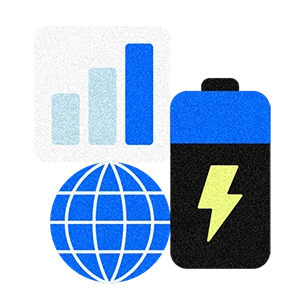Table of contents
You’ve got a lot to manage when running a business, and spending hours each week on financial reports probably isn’t at the top of your to-do list. Understandably, many business owners outsource their financial tasks to an accountant to keep their books in order. While it’s a smart move, understanding the basics yourself can still be valuable.
A balance sheet is a great way to get a clear picture of where your business stands financially. Find out what a balance sheet is, how to set it up and how it can help you run your business better. Plus, we’ve got a handy template that you can download and start using right away.
What is a balance sheet?
A balance sheet is a financial document that gives a snapshot of your business’s finances at a specific point in time. Think of it like a health check – how’s your business doing financially right now? Is it in good shape, or are some areas out of balance and needing attention?
It breaks your business down into three key parts: assets, liabilities and equity (we’ll go into these in more detail later). Overall, a balance sheet helps you better understand your business’s financial health.
In Canada, small businesses typically use the Accounting Standards for Private Enterprises (ASPE) when preparing balance sheets. Using ASPE is simplerthan following International Financial Reporting Standards (IFRS), which are required for publicly traded companies.
What are the benefits of a balance sheet?
Keeping a balance sheet and regularly reviewing it can help you assess your business’s performance, spot financial trends and make informed decisions. Here’s why it’s valuable:
Gives you financial clarity: You can see at a glance if your business is in a strong position or if cash flow is tight. It helps you identify potential issues, like too much debt or not enough assets to cover expenses.
Helps with decision-making: While many other financial reports provide a historical view of your business’s finances, a balance sheet shows you upcoming financial events, such as debts that need to be paid during the next period. Are you considering a big purchase, hiring staff or expanding? A balance sheet shows whether you can afford it.
Tracks financial progress: By comparing your latest balance sheet with past ones, you can see how your business is growing (or where it might be struggling). This helps you understand long-term trends and make better financial decisions.
Attracts investors or secures lending: Investors and banks may want to see your balance sheet before they invest in or lend you money, as it’ll show if you have a track record of managing assets and liabilities responsibly. A solid balance sheet can also support your application for funding programs like the Canada Small Business Financing Program (CSBFP).
Helps you prepare for tax season: Your balance sheet keeps track of essential information for filing accurate tax returns. Regularly updating it makes it easier to report income and stay compliant with the Canada Revenue Agency’s (CRA) filing requirements.
The main components of a balance sheet
Essentially, a balance sheet boils down to three things:
- Assets – what your business owns
- Liabilities – what your business owes
- Equity – what’s left over after covering debts
Let’s break these sections down and go through the steps to create your balance sheet.
How to prepare a balance sheet
1. Decide on a reporting date
Pick a reporting date for your balance sheet – typically the last day of a financial quarter, but it could also be the end of a month or year. This date marks the point in time when you’ll snapshot your business’s financial position. Being consistent with your reporting periods makes it easier to track trends and compare your business’s progress over time.
2. Add up your assets
Assets are everything your business owns that has value. These fall into two categories: current assets (i.e. short-term) and non-current assets (long-term).
To start, list the dollar value of your current assets. These are the things your business owns that can be quickly converted into cash or used up within the next year, for example:
- Cash: Money in your bank account or actual cash in hand
- Accounts receivable: Money customers owe you but haven’t paid yet
- Inventory: Your stock, including ready-to-sell goods and raw materials
- Prepaid expenses: Bills you’ve paid in advance (e.g. rent, subscriptions). These count as assets since you’ve already paid for them.
Next, list your non-current assets – the things your business owns that aren’t likely to be turned into cash within the next year. These include land, buildings, vehicles, furniture, equipment and machinery, all of which add long-term value to your business.
Add up both your current and non-current assets, and you’ve got your total assets. This number shows how much cash or easily accessible value you have now, along with the assets that support your business over the long term.
3. Add up your liabilities
Liabilities are the debts or obligations your business needs to pay off. Just like assets, they’re split into two categories: current liabilities (short-term) and non-current liabilities (long-term).
Start with listing your current liabilities – these are debts you’ll need to pay off within a year. Common ones include:
- Accounts payable: Money you owe suppliers or other businesses for goods or services received
- Wages payable: If you employ staff, you’ll also need to include any money you owe your employees for the work they’ve done but haven’t yet paid.
- Other current liabilities: Includes taxes owed (like GST/HST or corporate income tax instalments), unpaid bills, credit card debt and short-term loans
Then, move on to non-current liabilities. These are debts that stretch beyond a year, such as long-term loans (e.g. business mortgages or equipment financing).
Once you’ve added your current and non-current liabilities, you’ll have your total liabilities. This number tells you how much your business owes, which helps you see how much of your business’s resources are tied up in repayments and ongoing financial commitments.
4. Calculate your equity
Now that you know what your business owns (assets) and owes (liabilities), you can figure out your equity – the value left over after everything’s paid off. It’s what you get to keep as the owner of the business. Add it up like this:
- Capital: Money you’ve personally invested in the business
- Retained earnings: Profits that you reinvest in the business instead of withdrawing
- Owner’s drawings: Money you’ve taken out for personal use (subtract this amount)
The remaining amount is your total equity.
5. Analyze your balance sheet results
Now it’s time to see how everything stacks up. Using the formula:
Assets = Liabilities + Equity
This means everything your business owns (assets) is funded by either debt (liabilities) or your own investment (equity).
If your total assets are higher than the combined total of your liabilities and equity, that’s a positive sign – your business is doing great! It means you’ve got more assets than you owe, which leaves you with a nice buffer. But if your assets fall short of your liabilities and equity, that could mean your business is carrying too much debt. In that case, you may need to make some adjustments, such as focusing on reducing debt or finding ways to increase your assets or income.
Other key insights your balance sheet can reveal
Your balance sheet can also reveal hidden trends and potential problem areas. Here are examples of insights you might uncover:
Are expenses outpacing revenue? If costs are increasing but your income isn’t keeping up, it might be time to review spending and identify areas to cut back.
Do you have too much stock sitting idle? Excess inventory ties up cash and could indicate slow-moving products. An inventory management tool can help you monitor stock levels and which items aren’t selling well. Consider adjusting your purchasing strategy or running promotions to clear out excess stock.
Are customers taking longer to pay? A growing accounts receivable could mean payment delays, which can hurt cash flow. You may need to follow up with customers or tighten payment terms. With Square Invoices, you can easily track the status of invoices and send automatic reminders to customers to help keep payments on track.
Is your cash balance shrinking? If your available cash is consistently decreasing, it could be a sign you need to adjust your pricing, reduce costs or find ways to bring in revenue more quickly.
Are you over-relying on credit? An increase in liabilities may indicate you’re leaning too heavily on borrowed funds to run your business. Keeping an eye on this can help you avoid financial strain.
Common balance sheet mistakes to avoid
Like any financial document, a balance sheet is only helpful if it’s accurate. Common pitfalls to watch out for are:
- Overestimating asset values: Don’t be tempted to inflate your assets to make your business look better! Be realistic when estimating asset value.
- Forgetting liabilities: Small liabilities, like unpaid bills, can easily be overlooked. Include everything, no matter how minor it seems, to keep your balance sheet accurate.
- Mixing personal and business finances: Keep your personal and business finances separate. Otherwise, it’ll muddy your view of your business’s true financial situation.
Your balance sheet is a helpful tool for staying on top of your finances. When reviewed alongside other reports like your profit and loss and cash flow statements, you get a more complete view of your business’s financial health.
An all-in-one tool like Square Point of Sale can further support your financial tracking with real-time reports, sales analytics and inventory management, helping you monitor your business’s performance in one place. Plus, it syncs with accounting software like QuickBooks, Xero and Wave, simplifying the process of managing both your revenue and expenses. With the right tools, making smart business decisions becomes that much easier.
![]()
![]()

![How To Set Up and Use a Balance Sheet for Your Business [With Template]](https://images-cdn1.welcomesoftware.com/Zz1iNTE5ZWY2MjkzMWQxMWYwOTQ2NzFlOThkZTYxYWQ1OA==?width=584&height=390)









